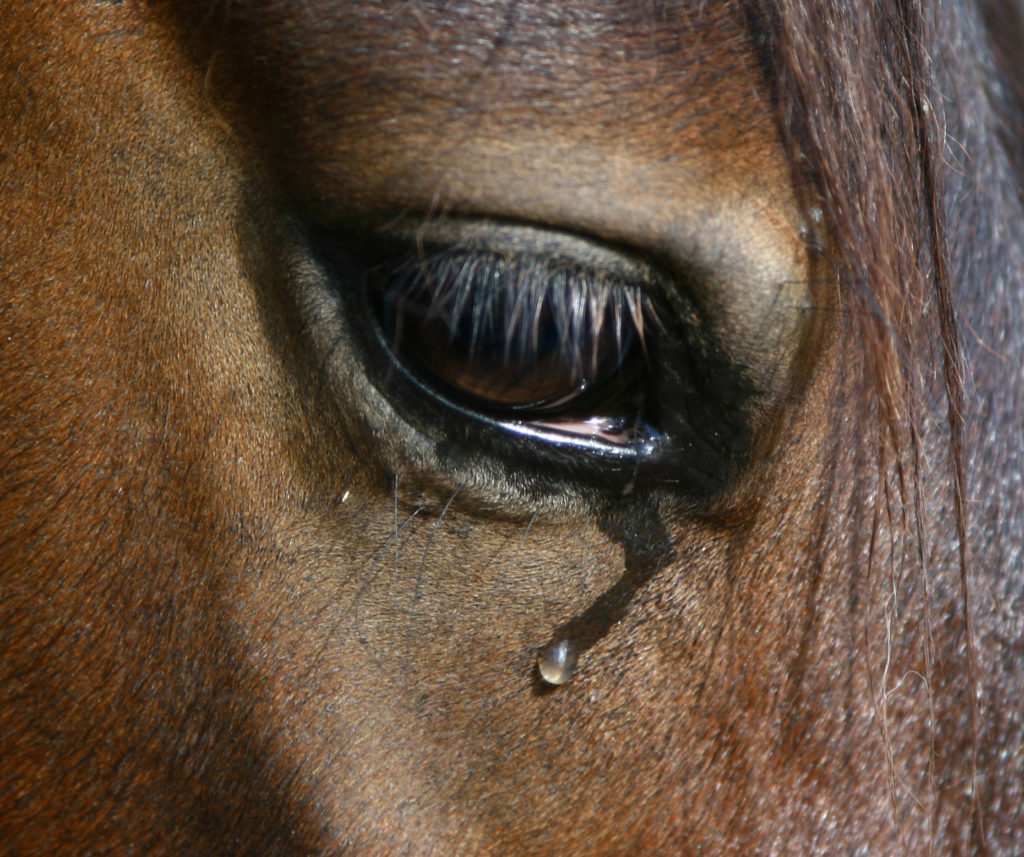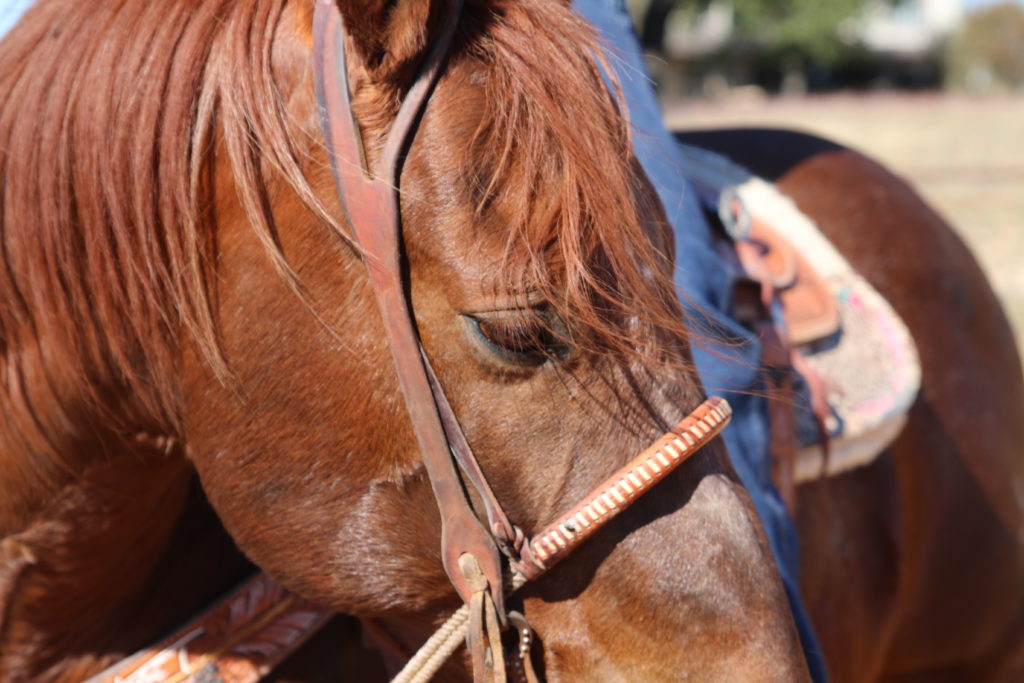A painful, squinty, swollen eye is an obvious cause for concern, as is an eye with thick or discolored discharge. What do you make of a horse whose eye is simply watery, though?

Absent any other signs of trouble, a horse who consistently has tears running down his face may have a blocked tear duct. Technically called nasolacrimal ducts, these tiny passages drain excess tears from the eyes through the nose. When these ducts become blocked, tears collect and spill over the bottom lid. Ducts become blocked for a variety of reasons, including the mucus in equine tears and the simple fact that some horses have narrower ducts than others.
Your veterinarian can flush a duct by running a small tube up through the horse’s nose into the end of the channel. Then a squirt of saline will usually clear the blockage—you will know it has worked when you see fluid bubble up from the eye like a fountain.

After flushing, some horses will never have the problem again, but others may develop another blockage within days. In these cases, you may opt to simply leave the duct blocked. It will cause no harm to your horse, even over the long term. During the summer, however, you’ll want to protect him from flies, which will be attracted to the moisture. And year-round, be sure to cover the skin below the eye with a thin layer of petroleum jelly to prevent irritation from the continual drainage.





